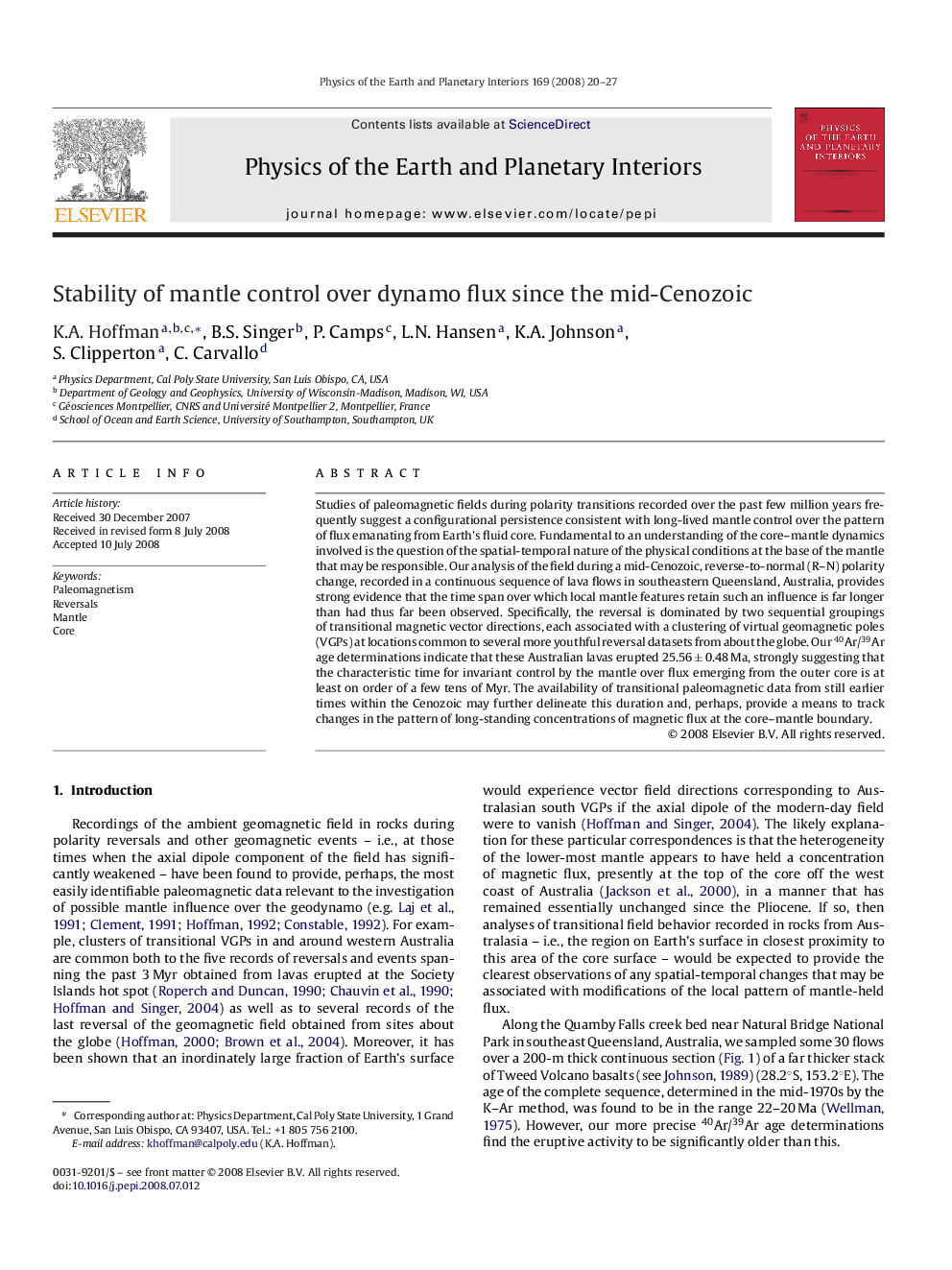| Article ID | Journal | Published Year | Pages | File Type |
|---|---|---|---|---|
| 4742628 | Physics of the Earth and Planetary Interiors | 2008 | 8 Pages |
Studies of paleomagnetic fields during polarity transitions recorded over the past few million years frequently suggest a configurational persistence consistent with long-lived mantle control over the pattern of flux emanating from Earth's fluid core. Fundamental to an understanding of the core–mantle dynamics involved is the question of the spatial-temporal nature of the physical conditions at the base of the mantle that may be responsible. Our analysis of the field during a mid-Cenozoic, reverse-to-normal (R–N) polarity change, recorded in a continuous sequence of lava flows in southeastern Queensland, Australia, provides strong evidence that the time span over which local mantle features retain such an influence is far longer than had thus far been observed. Specifically, the reversal is dominated by two sequential groupings of transitional magnetic vector directions, each associated with a clustering of virtual geomagnetic poles (VGPs) at locations common to several more youthful reversal datasets from about the globe. Our 40Ar/39Ar age determinations indicate that these Australian lavas erupted 25.56 ± 0.48 Ma, strongly suggesting that the characteristic time for invariant control by the mantle over flux emerging from the outer core is at least on order of a few tens of Myr. The availability of transitional paleomagnetic data from still earlier times within the Cenozoic may further delineate this duration and, perhaps, provide a means to track changes in the pattern of long-standing concentrations of magnetic flux at the core–mantle boundary.
